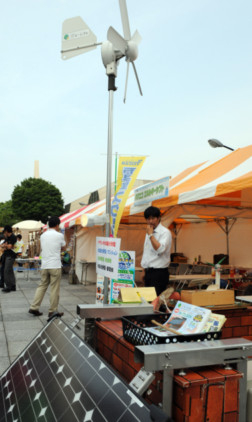
After years of reliance on nuclear power, Japan’s energy policy is now in a state of uncertainty following strong public opposition to restarting reactors after the Fukushima disaster. Under pressure from the Japanese public, on September 14, Prime Minister Yoshihiko Noda of the Democratic Party of Japan announced a commitment to phase out nuclear power by the 2030s. However, with a new round of elections looming in December, a change in leadership could well put this plan in jeopardy, with current poll leaders the Liberal Democrats only committing to a three-year review period to decide whether to restart all plants.
“It would be physically very easy to phase out all nuclear energy in Japan, it’s the economics that are the problem. Japan has been bringing some reactors back online as the cost of gas has been hurting the economy,” says Dr Bob Lloyd, Director of Energy Studies at the University of Otago, New Zealand.
So far, only two of 54 reactors have been brought back online, but as Japan relies even more heavily on imported fuel, this has put pressure on the country’s ageing coal- and oil-fired power plants and prompted a spike in the price of natural gas.
New policy
Under the new policy, power generation from renewable sources is set to triple, with investment already showing significant growth after the introduction of feed-in tariffs in July. Reuters reported in September that $2 billion (about Dh7.34 billion) has already been pumped into the sector since the government launched the scheme.
At the forefront of the nuclear phase out are concerns over global warming due to increased reliance on fossil fuels — both Japan and Germany have fallen back on LPG to sustain power supply until sufficient renewable energy resources can be established. “Japan is facing the same problems as the rest of the world as far as energy is concerned,” explains Dr Lloyd, citing the latest World Energy Outlook report from the International Energy Agency (IEA), which advises rapid deployment of energy efficient technologies before 2017, or all C02 emissions allowable by 2035 will already be locked-in by that time.
Initiatives to ramp up Japan’s renewable energy supply are already under way, with projects such as the Asian Super Grid launched by the Desertec Foundation and the Japan Renewable Energy Foundation (JREF) in March 2012 aiming to “accelerate the deployment of renewable energy to provide secure and sustainable alternatives to fossil and nuclear energies,” according to a Desertec statement.
As a world leader in solar technology and manufacturing, Japan is well equipped to rapidly implement photovoltaic energy schemes, and large-scale commercial developments are already under way. Among these will be the country’s biggest solar park built by Toshiba, which will rise from the ruins of Minamisoma city in Fukushima prefecture.
Wind farms are increasingly appearing on the horizon, but it’s the offshore facilities that may hold the key to a sustainable energy supply. “There is sufficient wind energy, especially offshore, to easily power the whole of Japan,” says Dr Lloyd. “The big problem with renewables such as wind and solar is that they need to be backed up for when the wind and sun are not doing their thing and Japan has around 22 GW of hydro storage, including some pumped hydro power, which can be used to back up the wind and solar energy.”
Reducing consumption
Efforts to reduce consumption were successful in the immediate aftermath of Fukushima. As part of an ongoing public awareness campaign, businesses and consumers are being encouraged to cool share and warm share by congregating in public places to cut down on power use at home. “We’ve adopted an energy-saving mentality by using electric fans instead of air conditioners in the summer and less heating in the winter, or we try to go somewhere like a department store or the library so that we don’t have to use appliances at home,” says Kyoko Adachi, a homemaker from Fujieda city, Shizuoka prefecture.
To improve the country’s poor ratings for energy efficient housing, a new wave of eco-houses and communities are being rolled out by companies such as Sekisui House and Daiwa House.







